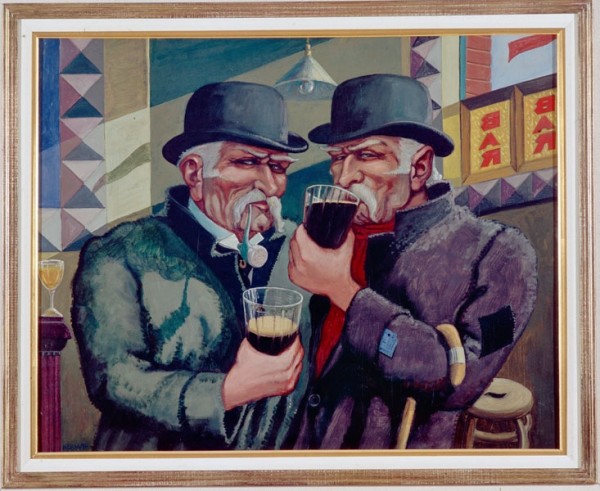Make it nua

History Ireland on IMMA’s 2011 exhibition, The Moderns.
Large-scale exhibitions of Irish art are as rare as written art histories of the period so the IMMA is to be commended for tackling the area head on. By their nature such exhibitions present a cartography of the period in question, effectively asserting that their route map is the newest and the best. Both as an exhibition and as a catalogue (available only after the exhibition had finished) this exhibition was big. It was meant to be synoptic and inclusive. It claimed to ‘explain the discoveries, influences and expansion of modernist ideas in Ireland’, asserted that it placed both photography and film as central to the visual arts canon, and informed us that it provided a multidisciplinary context within which we could explore our Irish art history. With the exception of that word ‘big’, none of the foregoing was true.
As the subtitle to this exhibition — ‘The Arts in Ireland from the 1900s to the 1970s’—inadvertently makes clear, this isn’t about Modernism in Ireland but is rather a loose, lopsided history of twentieth-century Irish art (including much post-Modernist work) which actually contains a wide range of artwork that S.B. Kennedy in his much more rigorous book Irish Art and Modernism 1880–1950 would have labelled ‘The Academic Tradition’. It also contains much work by non-Irish artists on the pretence that they influenced the Irish ones. In a room devoted to the White Stag Group, for instance, we have the American novelist J.P. Donleavy’s ‘Don’t Mind Me I’m From the New World’. The date given is c. 1940, which would make Donleavy roughly fourteen years of age. The work itself is a commercialised blue nude in imitation of the School of Paris. Donleavy is primarily a novelist who didn’t take Irish citizenship until 1967. What on earth is he doing here? Does anyone seriously think that a fourteen-year-old American boy’s daub has any relationship to Modernist Irish art? [PDF] Ironically, one major aspect of the impact of the White Stag Group, most of whom weren’t Irish, is virtually ignored: their attempt to deal with World War II and the threat of global warfare.
Harry Kernoff gets a favourable mention in the History Ireland review, and he’s an artist we’ll be revisiting in gorse, not least because his painting ‘A Bird Never Flew on One Wing’ inspired the look for Star Trek‘s Dr Spock, allegedly. And while we’re talking about modernism, look out for an essay by Darran Anderson on how ancient modernism is in the debut issue of gorse (January 2014).
